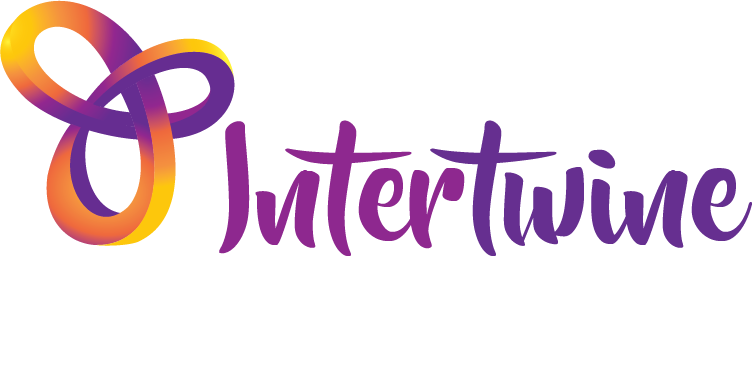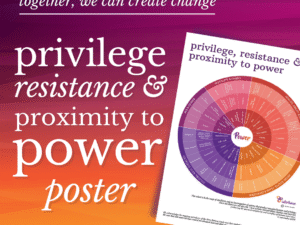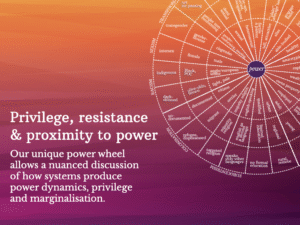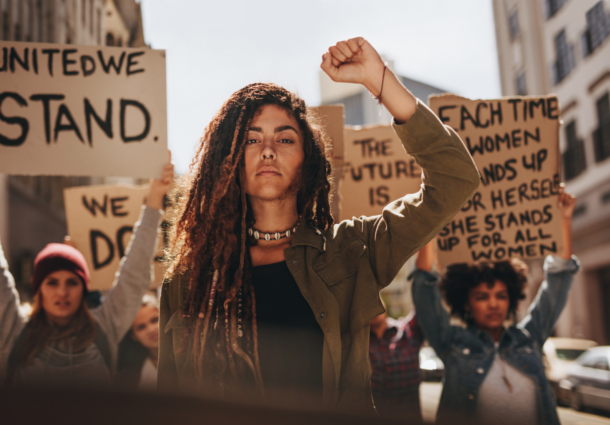At the Better Together conference a number of years ago, we had the good fortune to be involved in a workshop by Robyn Ochs presenting her fabulous Beyond Binaries exercise. It’s very clever — although you expect it is going to break down binaries and tell you that there are more categories than ‘straight’ or ‘gay’ or ‘male’ or ‘female’, what it actually does is problematise the idea that these labels have fixed meanings in themselves. By asking people to describe their label and then their practice, switch their papers around and then physically move to spaces on the scale, Ochs lets participants viscerally connect with the range of people using the same label as them but with varying behaviours.
We wanted to use the exercise for our FUSE program, but it needed to be more intersectional. Would this work for other aspects of our identities, we wondered? Were they similarly variable? We decided they were: some of our staff reported experiencing their disabilities as fixed, while for others, the label stayed the same but capacity fluctuated; some staff reported code-switching with regards to ethnic identity or cultural practices.
With permission from Robyn, we amended the handout for the exercise, adding ethnicity and disability. We removed some of the detailed questions about sexual experience, partly to simplify the process and partly because we were working with high-schoolers.
Guidelines for running the exercise
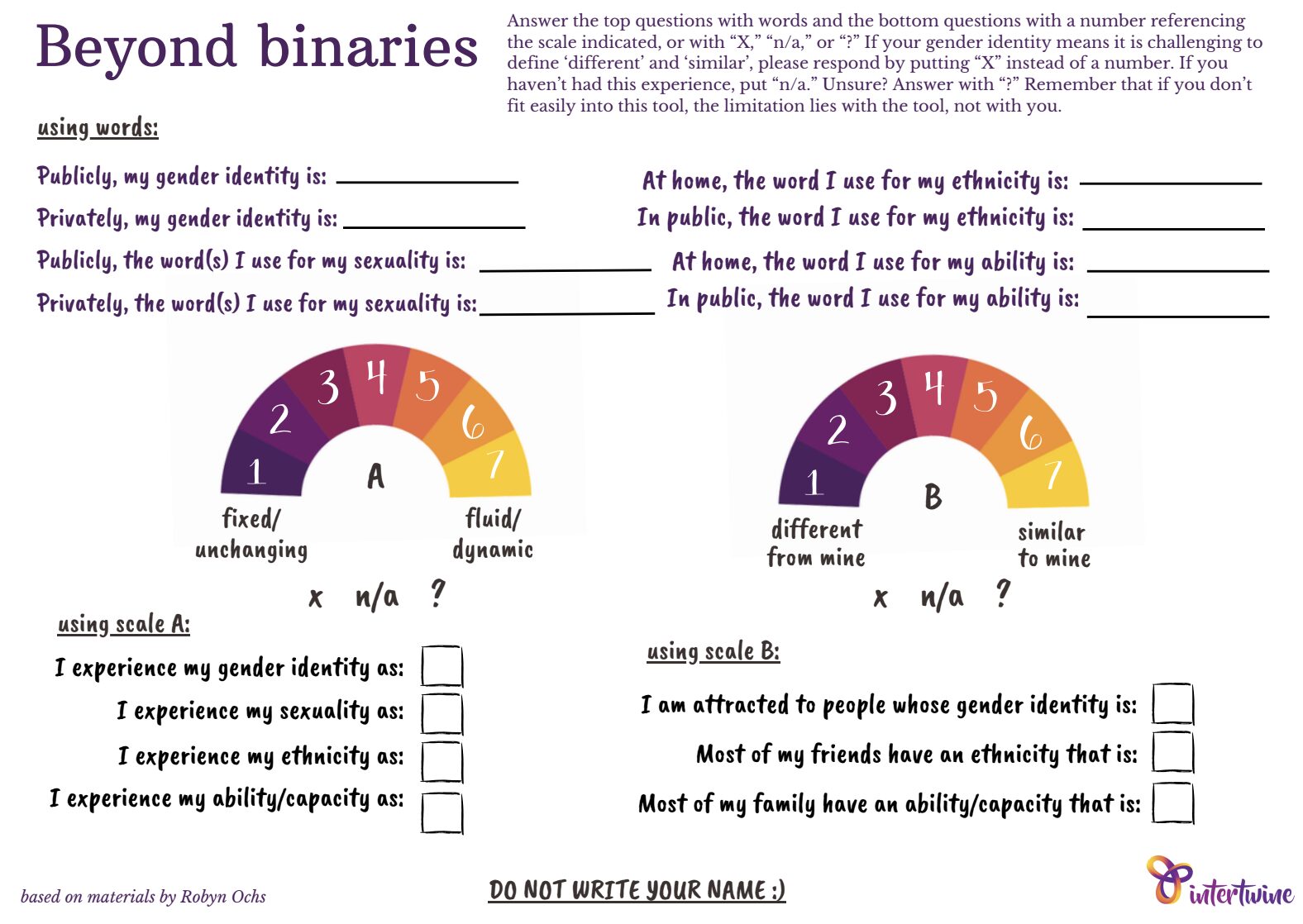
What you’ll need
- At least 20 participants (it’s too easy to guess whose answers belong to who otherwise)
- The Beyond Binaries handout
- Enough identical pens that there’s one for every participant
- Coloured numbers 1 to 7 that are big enough to see from a distance
Instructions
Describe the activity and explain its purpose: to help students understand who’s in the room as well as break down ideas about binaries. Note: inform students that they are not to put their names on the questionnaire and that all answers will be kept confidential.
Distribute identical pens. It is very important that students use a common ink colour so no one can trace answers back to a specific student. Read the instructions aloud. Give participants about 5 minutes to answer questions. If there aren’t very many students, then all facilitators/staff in the room should complete the exercise as well to make sure there are more sheets and it’s less easy to work out who each sheet belongs to!
While the students work, tape the numbered sheets (‘zero’ at left and ‘seven’ at right) across the front wall of the classroom or on the floor allowing enough space between them for participants to stand in groups during the second part of the activity. The more space between numbers, the easier it will be to see on which number people are standing. Adjust according to the size of your class and configuration of your classroom.
Again, remind participants that their names should not appear anywhere on the questionnaire. Ask them to fold their questionnaire in half with the blank side facing out when finished.
Collect all the sheets, and shuffle them by ‘dealing’ the pile into three separate piles, then stacking them, and repeating until you are confident that they have been randomised. Make it clear that you are not looking any individual sheet’s answers while shuffling. It is important that you make an effort to not show an interest in a specific student’s responses!
Announce you will be re-distributing the sheets. Explain it is highly unlikely anyone will receive their own sheet back, but on the unlikely chance someone did, no one would know unless they exclaimed, “I got mine back!”
Ask people to offer the person whose sheet they draw the same respect they would wish for their own questionnaire/information.
Redistribute the sheets to the class. When all the sheets have been distributed, ask students to stand and move to the front of the classroom while you move to the back so you can ‘orchestrate’ their movements.
- Read the first statement from Scale A and ask students to line up under the number for the answer on their sheets. Remind them they are ‘performing’ the answers on the questionnaire in their hand, not the answers they provided earlier. In this way, everyone’s responses can be made known while individual student responses remain confidential.
When everyone has settled under a number, direct the class to make some observations about the distribution. Then, move on to each question in succession having students move to their indicated position.
Repeat for each statement under Scale A and then Scale B.
- Before reading the first ‘word’ question (on questionnaire), ask everyone to return to their #1 Scale B answer. Tell participants that you will be calling out identity words, such as gay, straight, bisexual, asexual, pansexual, queer, questioning, “choose not to label,” etc. Ask them to raise their hand each time a word that is on their sheet under ‘public identity’. You want to honour every identity in the room, so ask students at the end to call out any identity word that has not yet been said.
Repeat with other Scale B questions and matching word answers. Note that these are different from the sexuality activity and demonstrate more about community and connection or similarity of experiences.
- Ask for a show of hands about whether anyone’s sheet had all/mostly ‘x’ answers except for sexuality. Show of hands if anyone’s sheet had mostly ‘7’s. Ask if anyone has observations about this overlap.
Be aware that this exercise may cause distress in some participants. In our workshops with young people, we immediately followed this exercise with a discussion about self-esteem and advocacy to highlight ways in which participants can draw strength and pride from their identity.
Gratefully adapted from: Robyn Ochs: Beyond binaries
Ro Bersten has been involved with activist organising spaces and navigating collective spaces from various positions of privilege and marginality since 1988. Image: created by Ro Bersten
